
How to Use SMPS 5V 60A: Examples, Pinouts, and Specs
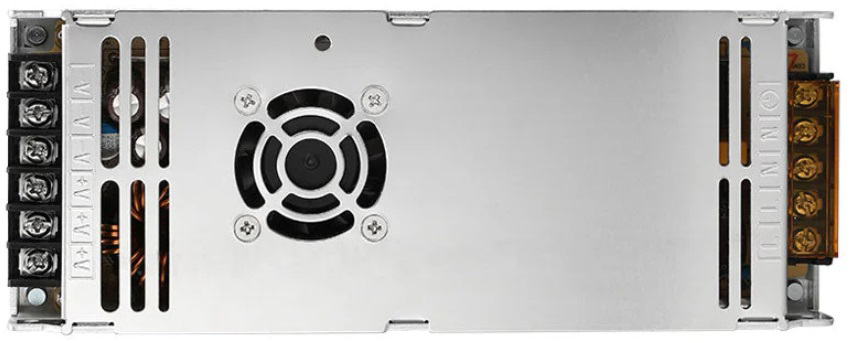
 Design with SMPS 5V 60A in Cirkit Designer
Design with SMPS 5V 60A in Cirkit DesignerIntroduction
The SMPS 5V 60A is a high-efficiency Switch Mode Power Supply designed to convert electrical power into a stable 5V DC output with a maximum current capacity of 60A. This component is ideal for applications requiring a reliable and robust power source, such as powering LED strips, industrial control systems, high-current microcontroller projects, and other electronic devices.
Explore Projects Built with SMPS 5V 60A
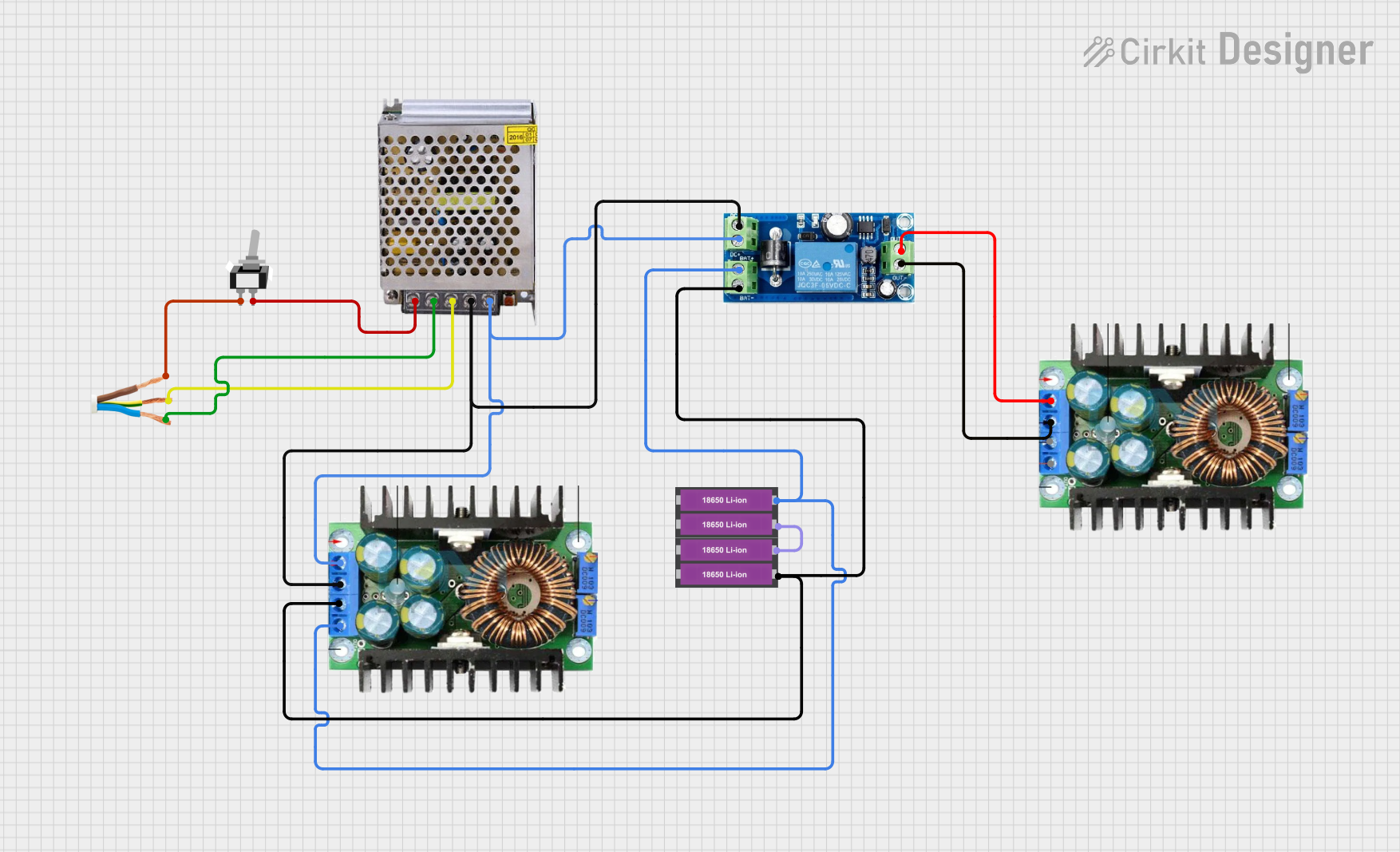
 Open Project in Cirkit Designer
Open Project in Cirkit Designer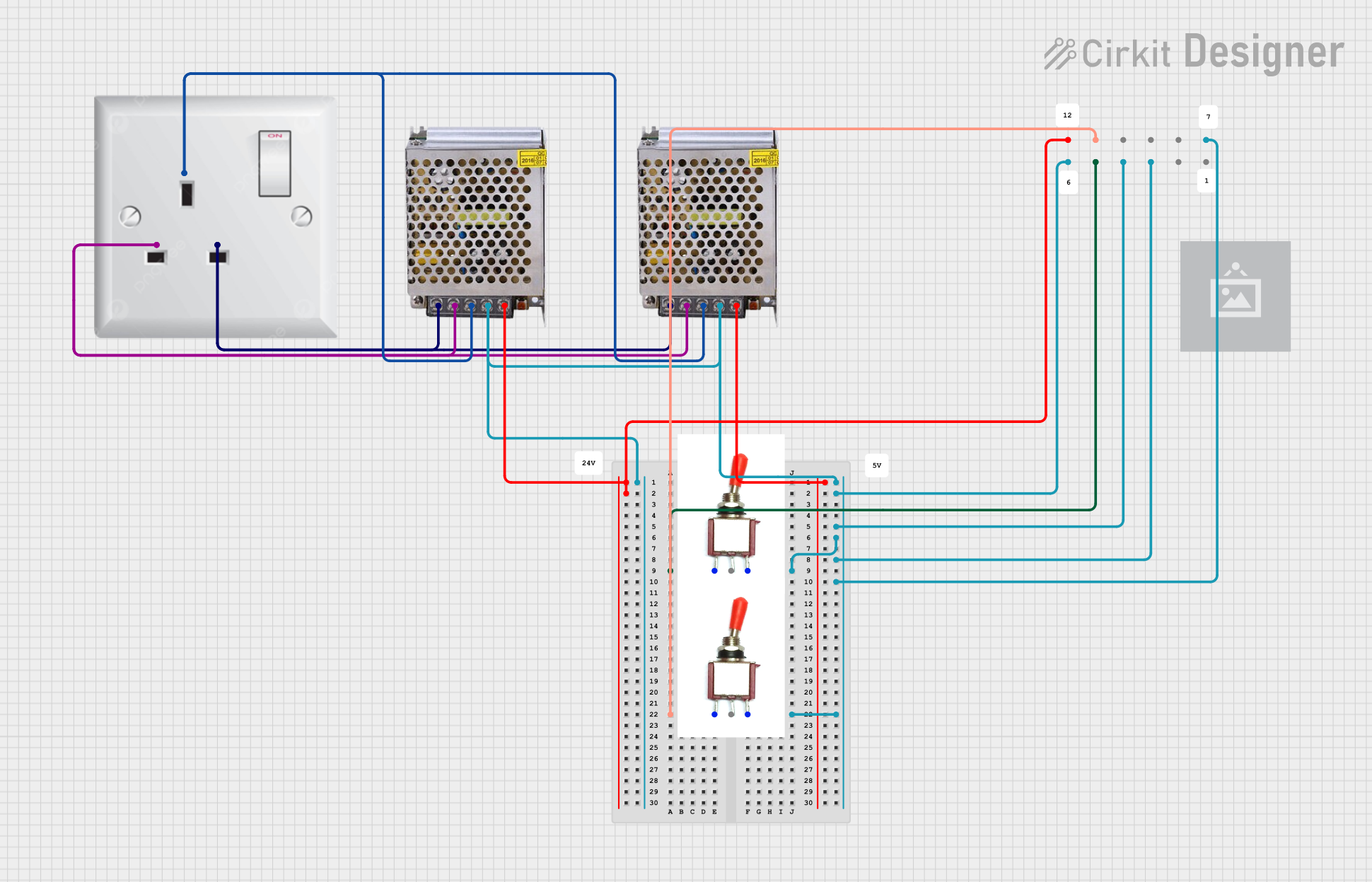
 Open Project in Cirkit Designer
Open Project in Cirkit Designer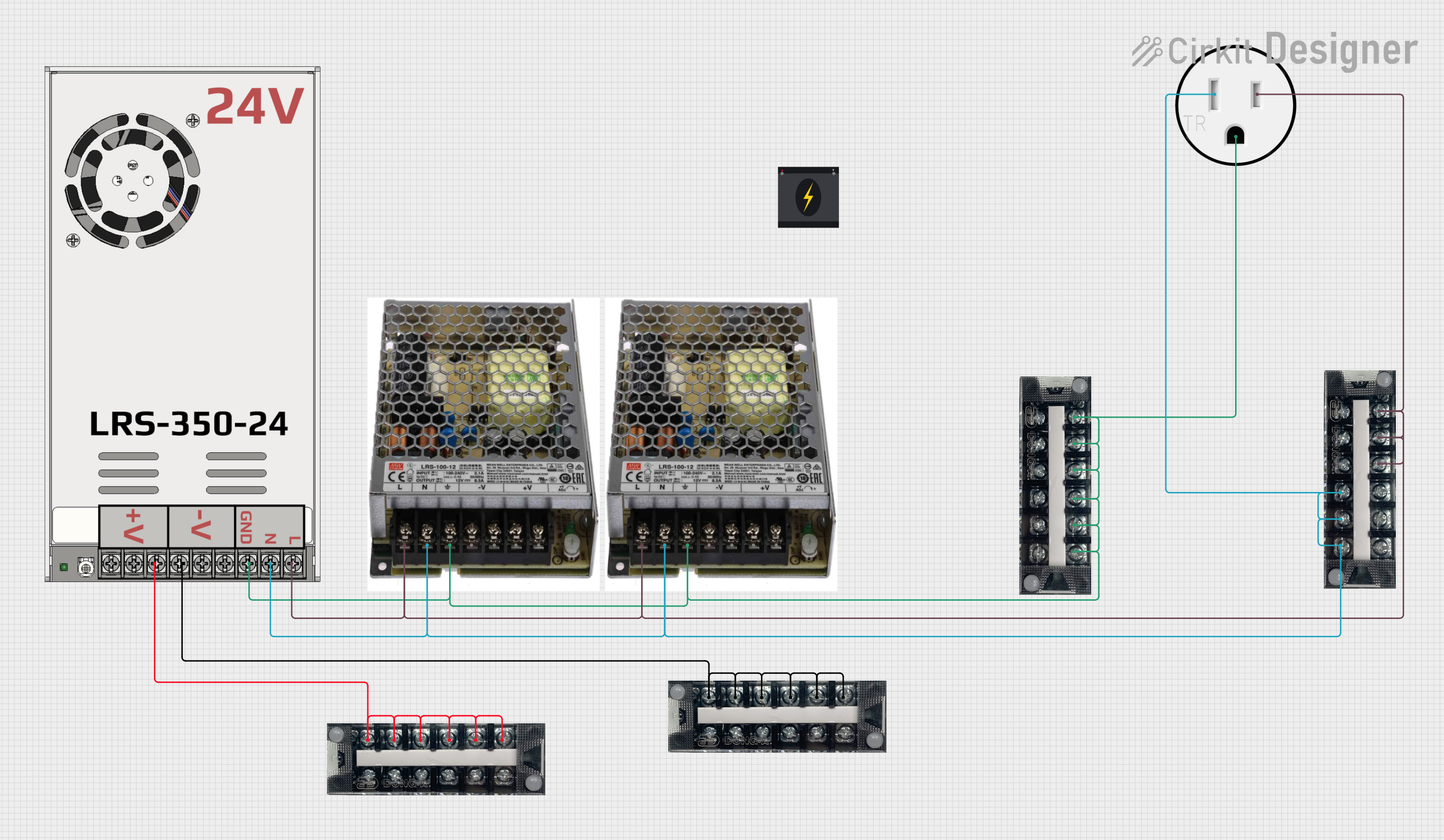
 Open Project in Cirkit Designer
Open Project in Cirkit Designer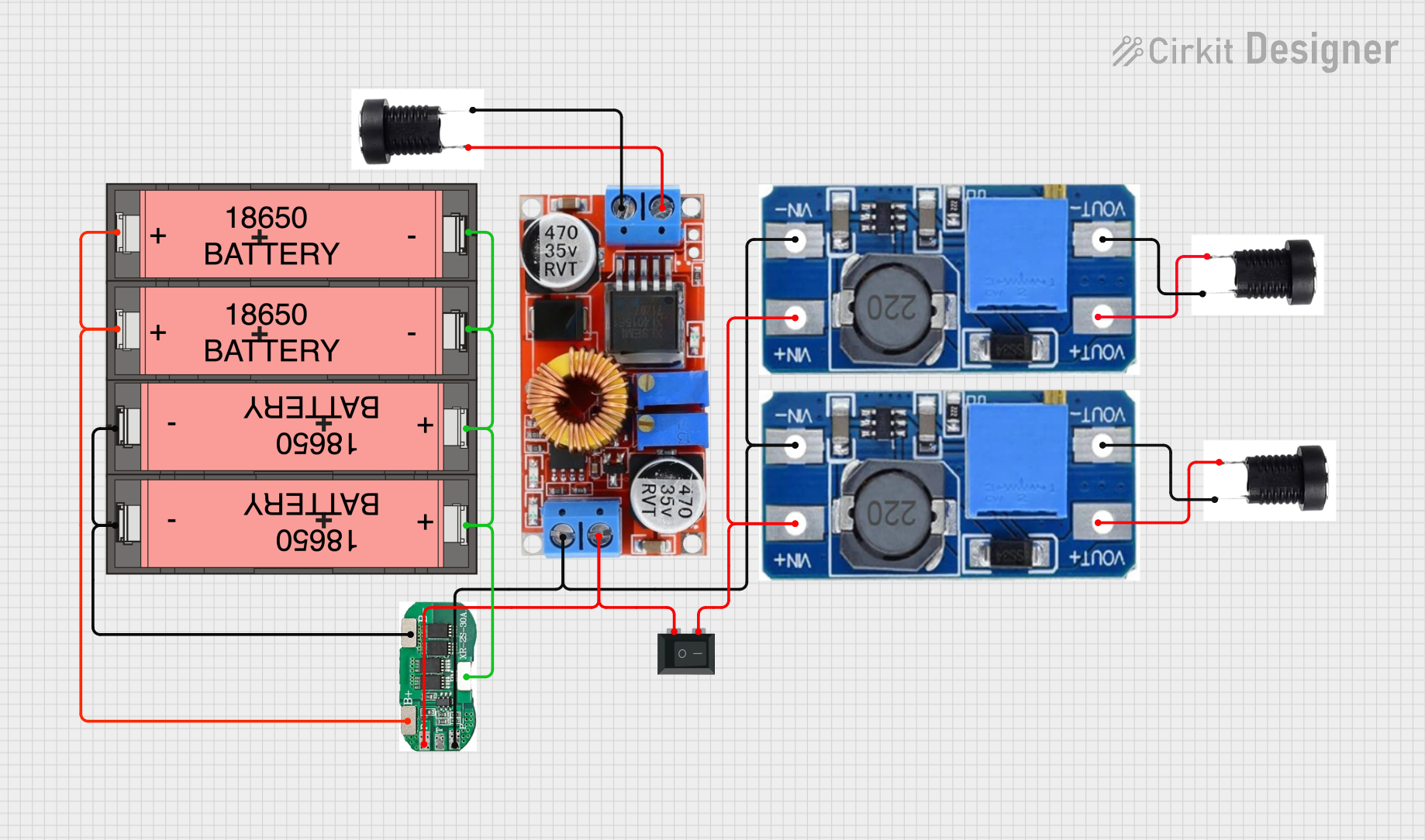
 Open Project in Cirkit Designer
Open Project in Cirkit DesignerExplore Projects Built with SMPS 5V 60A

 Open Project in Cirkit Designer
Open Project in Cirkit Designer
 Open Project in Cirkit Designer
Open Project in Cirkit Designer
 Open Project in Cirkit Designer
Open Project in Cirkit Designer
 Open Project in Cirkit Designer
Open Project in Cirkit DesignerCommon Applications and Use Cases
- Powering high-current LED lighting systems
- Supplying power to industrial automation equipment
- Driving motors and actuators in robotics
- Providing power to large-scale microcontroller or single-board computer projects
- Charging battery packs or powering DC loads
Technical Specifications
The following table outlines the key technical details of the SMPS 5V 60A:
| Parameter | Value |
|---|---|
| Input Voltage Range | 100-240V AC (50/60Hz) |
| Output Voltage | 5V DC |
| Maximum Output Current | 60A |
| Maximum Output Power | 300W |
| Efficiency | ≥ 85% |
| Ripple and Noise | ≤ 120mV |
| Operating Temperature | -10°C to +50°C |
| Cooling Method | Forced air cooling (fan) |
| Protection Features | Overload, overvoltage, and short-circuit protection |
Pin Configuration and Descriptions
The SMPS 5V 60A typically has the following input and output terminals:
| Pin/Terminal | Label | Description |
|---|---|---|
| 1 | L | Live AC input (100-240V AC) |
| 2 | N | Neutral AC input |
| 3 | GND | Earth/ground connection |
| 4 | V+ | Positive DC output (5V) |
| 5 | V+ | Positive DC output (5V) |
| 6 | V- | Negative DC output (ground) |
| 7 | V- | Negative DC output (ground) |
| 8 | ADJ | Voltage adjustment potentiometer (±10% adjustment) |
Usage Instructions
How to Use the SMPS 5V 60A in a Circuit
Input Connection:
- Connect the AC input terminals (
LandN) to a 100-240V AC power source. - Ensure the ground terminal (
GND) is properly connected to the earth for safety.
- Connect the AC input terminals (
Output Connection:
- Use the
V+terminals to connect to the positive side of your load. - Use the
V-terminals to connect to the negative side (ground) of your load. - For high-current applications, distribute the load evenly across multiple
V+andV-terminals.
- Use the
Voltage Adjustment:
- If necessary, use the
ADJpotentiometer to fine-tune the output voltage within ±10% of 5V.
- If necessary, use the
Cooling and Ventilation:
- Ensure adequate airflow around the SMPS to prevent overheating.
- Do not block the cooling fan or ventilation holes.
Load Considerations:
- Do not exceed the maximum output current of 60A.
- For inductive loads (e.g., motors), consider adding a flyback diode to protect the SMPS.
Important Considerations and Best Practices
- Always verify the input voltage range before connecting the SMPS to the power source.
- Use appropriately rated wires and connectors to handle the high current output.
- Avoid operating the SMPS at full load for extended periods to prolong its lifespan.
- Ensure proper grounding to minimize electrical noise and improve safety.
- If using the SMPS with sensitive electronics, consider adding additional filtering capacitors to reduce ripple and noise.
Example: Connecting to an Arduino UNO
The SMPS 5V 60A can be used to power an Arduino UNO and other peripherals. Below is an example of how to connect it:
- Connect the
V+terminal of the SMPS to the Arduino's5Vpin. - Connect the
V-terminal of the SMPS to the Arduino'sGNDpin. - Ensure the SMPS is properly grounded and ventilated.
Here is a simple Arduino code example to blink an LED while powered by the SMPS:
// This code blinks an LED connected to pin 13 of the Arduino UNO.
// Ensure the Arduino is powered by the SMPS 5V 60A.
void setup() {
pinMode(13, OUTPUT); // Set pin 13 as an output pin
}
void loop() {
digitalWrite(13, HIGH); // Turn the LED on
delay(1000); // Wait for 1 second
digitalWrite(13, LOW); // Turn the LED off
delay(1000); // Wait for 1 second
}
Troubleshooting and FAQs
Common Issues and Solutions
No Output Voltage:
- Cause: Input power is not connected or is outside the specified range.
- Solution: Verify the AC input voltage and connections.
Overheating:
- Cause: Insufficient ventilation or operating at full load for extended periods.
- Solution: Ensure proper airflow and reduce the load if necessary.
Output Voltage Fluctuations:
- Cause: Load exceeds the maximum current rating or poor connections.
- Solution: Check the load and ensure secure connections to the terminals.
Fan Not Working:
- Cause: Fan failure or blocked ventilation.
- Solution: Inspect the fan and clear any obstructions. Replace the fan if necessary.
High Ripple or Noise:
- Cause: Insufficient filtering for sensitive electronics.
- Solution: Add external capacitors or filters to the output.
FAQs
Q1: Can I use the SMPS 5V 60A to charge batteries?
A1: Yes, but ensure the battery charging circuit includes proper current and voltage regulation to prevent overcharging.
Q2: Is the SMPS suitable for outdoor use?
A2: No, the SMPS is not weatherproof. Use it in a dry, indoor environment or within a weatherproof enclosure.
Q3: Can I adjust the output voltage beyond 5V?
A3: The ADJ potentiometer allows for a ±10% adjustment, so the output voltage can be fine-tuned between approximately 4.5V and 5.5V.
Q4: What happens if the load exceeds 60A?
A4: The SMPS includes overload protection and will shut down to prevent damage. Reduce the load and restart the SMPS.
Q5: How do I know if the SMPS is working correctly?
A5: Use a multimeter to measure the output voltage and ensure it is stable at 5V. Check the fan operation and ensure the load is functioning as expected.